Review
As pump prices continue at high levels, the need to save fuel is becoming ever more important.
The Ford Econetic moniker puts the emphasis well and truly on economy and low CO2 output and the model on test here – the Fiesta Van Econetic – is a shining example of that genre, with a combined economy figure of 85.6mpg and CO2 emissions of just 87g/km.
In the past few years, small car-derived vans have come under increasing pressure from hi-cube offerings such as the Citroën Nemo, Peugeot Bipper and Fiat Fiorino, but while the Fiesta Van can’t compete on carrying ability, it certainly has the upper hand in the economy stakes.
The nearest the rival trio can manage is 68.9mpg although real-world economy is a different matter (see Behind the wheel, below).
Another advantage that the Fiesta Van has is true car-like drivability – it is, after all, a car with the back seats taken out.
Standard specification is something to brag about too. Unlike the above-mentioned trio, the Fiesta Van comes with electronic stability control (ESC) as standard, along with air-conditioning, auto stop-start, Bluetooth connectivity, an aux-in connection for external music devices, lumbar support on the driver’s seat, lowered suspension, aerodynamic rear undertray and low rolling resistance tyres.
The new Fiesta Van differs from its predecessor in the bodyshape, which is now smarter and cleaner looking, with laser-cut headlamps, a new grille and the option of 17-inch alloy wheels. Inside, switchgear has been moved around and there is a new centre console.
Under the bonnet in our test model was a new 1.6-litre turbodiesel powerplant offering 95bhp and 151lb-ft of torque.
In the rear, the Fiesta Van offers a cubic metre of loadspace and there is a standard half-height bulkhead with mesh above, along with a wipe-clean floor and four load-lashing eyes. Payload is 505kg and the ex-VAT price is £13,350.
The Fiesta Van has stronger residual values than its car-derived rivals, and that should give it enough of an edge to retain a running costs advantage, where it would be tougher to compare fuel consumption over a van’s life on a fleet as although they maybe well matched on paper, any shortfall in relation to official figures in real world use would depend on the driver, load and road and traffic conditions.
Behind the wheel
It’s easy to see why the Fiesta is the best-selling car in the UK. It looks stylish and, while it’s a small vehicle, it has all the comfort and slick drivability of something much bigger and more expensive – all of which applies to the Fiesta Van too.
Its seats are like something from a small sportscar, with lots of side support.
Drivers will welcome the lumbar adjustment, which helps improve comfort on long journeys.
There is masses of legroom in the front for both driver and passenger and, despite the fact that the top of the bulkhead is mesh, the van is still quiet on the road.
This 95bhp model may be an Eco variety, but there was no lack of power and even with a full load on board, it proved lively and willing.
Unfortunately, because of this vehicle’s car origins, there’s a large lip under the tailgate so loads can’t be slid in and out easily.
Our only real disappointment was that despite driving in a reasonably economical style during our test week, the fuel economy display on the dash reached only 57.4mpg at its peak – a far cry from the 85.6mpg official combined figure.
Verdict
As long as you don’t need to carry large amounts of cargo about at a fast rate of knots, the Fiesta Van will save huge amounts of cash at the pumps during its fleet lifecycle.
It will be interesting to see how close to this economy figure the new Transit Courier can come when it arrives early next year.

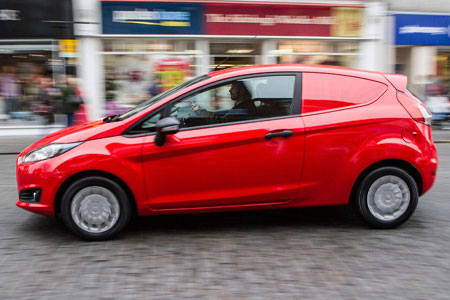
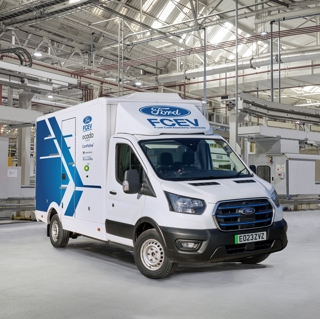
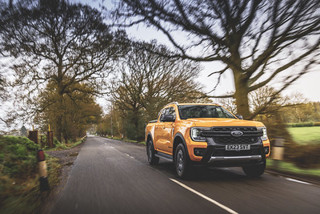


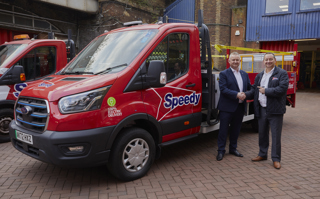



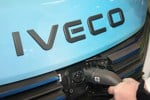





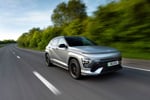



Andy Gibson - 14/08/2013 15:05
I have just bought a 2013 Ford Fiesta Sport van as I was starting a new electrical contracting business and wanted the most practical head turner on the market. When you see the Sport van in Candy blue it is stunning. HOWEVER, I would like to make you and anyone who reads this post aware of the fact that you can't fit a roof rack to this van. Ford will sell you a roof rack for this van, but it's completely useless as Ford have decided to remove the roof rack fixing points from their 2013 Fiesta vans and as I have now found out there are no alternative manufacturers who make a compatible roof rack for the 2013 Fiesta van. I now have a brand new Ford van, a brans new Ford roof rack and both are as much use as an ashtray on a motorbike. Having since spoken to Ford's technical department I was told by them that Ford decided to remove the fixing points and that they had informed the dealers of this in June of this year. However the dealers have no knowledge of this and after making them aware of the problem they came back with the part number for a roof rack that would fit. However it was the same part number of the Ford roof rack system that I already have. It now looks as if I have just bought the only van on the market that you cant fir a roof rack to and as such my business and ability to earn money is completely on hold.